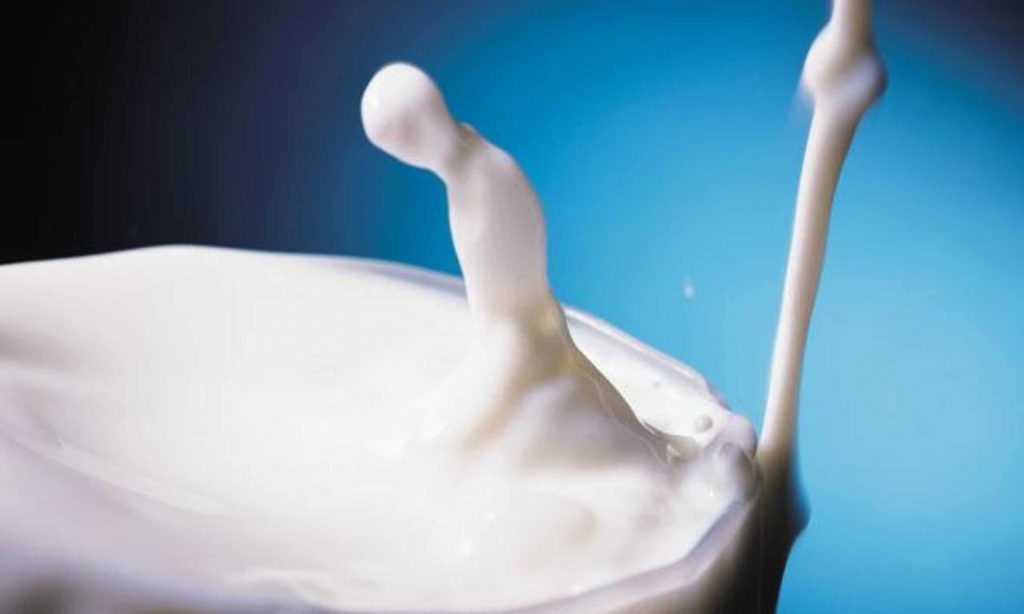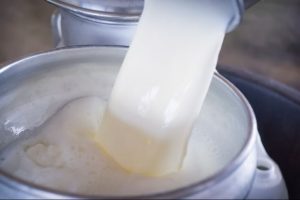
Milk flow on U.S. farms is stubbornly remaining below a year ago, especially in the West and Southwest.
Preliminary data for November show output was down for the fifth month in a row, estimated at 18.1 billion pounds, down 0.6% from November 2022. The top 24-state total, at 17.3 billion, was down 0.5%.
The October 50-state total was revised down 35 million pounds from last month’s estimate, which put output down 0.7% from 2022 instead of the 0.1% originally reported.
Cow numbers totaled 9.360 million, down 10,000 from the October count, which was unchanged from a month ago, but is down 44,000 head or 0.5% from a year ago and the smallest herd since June 2020.
The 24-state count was down 9,000 from October, which was revised down 5,000 head, 26,000 below a year ago.
The cow loss was more than expected, says StoneX, given how weak dairy cow slaughter has been, and the decline in milk output was more than expected; however, fat and protein content was up strongly, “So component adjusted production was up 0.8%, which is an acceleration from plus 0.3% in October.”
Output per cow in the 50 states averaged 1,932 pounds, down 61 pounds from October and 2 pounds or 0.1% below November 2022. Revisions lowered October output by 4 pounds in the 50 states.
California milk totaled 3.27 billion pounds, down 55 million or 1.7% from a year ago. Cow numbers were down 11,000 and output per cow was down 20 pounds.
Wisconsin cows put 2.6 billion pounds in the tank, up 4 million or 0.2% from a year ago, thanks to a 5-pound gain per cow offsetting the loss of 1,000 cows.
Idaho was up 0.3%, thanks to an additional 2,000 cows. Output per cow was unchanged.
Michigan was up 1.9%, Minnesota was off 0.7%, and New Mexico again posted the biggest loss, down 10.1%, on 27,000 fewer cows and 10 pounds less per cow.
New York was up 0.5%. Oregon was down 2.4%, on 4,000 less cows, although output per cow was up 10 pounds.
Pennsylvania was down 1.4% while South Dakota had the biggest gain, up 7.0%, thanks to 13,000 more cows. Output per cow was unchanged.
Texas was down 2.2% despite a 10-pound gain per cow but the state’s herd has not recovered from the fire, down 18,000 from a year ago.
Washington state was off 0.8%, on a 20-pound drop per cow. Cow numbers were down 1,000 from a year ago.
Cheese hemorrhaging
CME block Cheddar closed Friday at $1.52 per pound, down 6 cents on the week and 45.75 cents below a year ago, when it dropped almost 12 cents.
The barrels finished Friday at $1.45, 10.50 cents lower, and 29 cents below a year ago when they plunged 21 cents. Sales totaled 9 loads of block on the week and 27 of barrel, 11 on Friday alone.
The blocks dropped 6.75 cents Monday on 6 trades, lowest since July 10, but regained a quarter-cent Tuesday, inching back to $1.4550, on 4 trades.
The barrels were down 4.50 cents Monday, with 13 loads finding new homes, but inched up a half-cent Tuesday, hitting $1.41; 11 loads exchanged hands.
Midwest cheesemakers tell Dairy Market News that milk is available, allowing them to run steady production. Spot milk prices ranged from $4-under to $1-over Class. Volumes are not excessive but some sellers are offering milk below Class ahead of the end of year holidays.
Western retail cheese demand remains steady while food service remains steady to moderate. Price competitiveness of domestic cheese has improved but still has not manifested into strengthening moderate export demand.
CME butter fell to $2.46 per pound last Wednesday, lowest since June 30, but closed Friday at $2.49, down 18 cents on the week, ending three weeks of gain, and 36.50 cents below a year ago; 8 loads were sold last week.
The butter defied the gravitational pull Monday and gained 5.75 cents on 2 loads exchanging hands, then did it again Tuesday, up 5.75 cents, hitting $2.6050, on 5 more trades.
Central cream is “looser,” says DMN, and some butter makers say “plentiful,” with plants reporting strong to steady production.
Western cream volumes have improved along with strengthened average butterfat levels in milk. Butter makers anticipate more milk clearing to Class IV with bottling declines from closed schools.
Grade A nonfat dry milk closed Friday at $1.16 per pound, a half-cent lower on the week and 19 cents below a year ago, on 6 sales.
Monday’s powder was bid up a penny, then gave it back Tuesday, returning to $1.16, on 7 trades.
Dry whey saw a Friday close at 39.50 cents per pound, unchanged on the week but 6 cents below a year ago, with 2 sales for the week.
The whey was unchanged Monday but was offered a half-cent lower Tuesday, at 39 cents per pound.
GDT up 2.3%
The Global Dairy Trade Auction will end 2023 on an up note. Tuesday’s weighted average was up 2.3%, following a 1.6% gain on Dec. 5.
Butter led the gainers, up 9.9% after inching 0.7% higher Dec. 5. Anhydrous milkfat was up just 0.2%, after being unchanged last time.
Cheddar was up 6.9%, after jumping 9.7%, while GDT Mozzarella was down 1.1%.
Whole milk powder was up 2.9%, following a 2.1% rise. Skim milk powder was down 1.3%, following a 1.2% uptick, and lactose was unchanged, after jumping 5.3% last time.
StoneX says the GDT 80% butterfat butter price equates to $2.4153 per pound U.S., up 23.1 cents from the Dec. 5 event, and compares to CME butter which closed Tuesday at a pricey $2.6050. GDT Cheddar, at $1.9345, was up 12.7 cents, and compares to Tuesday’s CME block Cheddar at a bargain $1.4550.
GDT skim milk powder averaged $1.1885 per pound, down from $1.2115 (2.3 cents), and whole milk powder averaged $1.4549 per pound, up from $1.4080 (4.7 cents). CME Grade A nonfat dry milk closed Tuesday at $1.16 per pound.
Cheese sputtering
The Agriculture Department’s latest data shows cheese utilization is sputtering. October usage totaled 1.2 billion pounds, up 0.8% from October 2022, following two months of loss, and year to date was up just 0.1%.
The increase was led by strong domestic consumption, according to HighGround Dairy economist Betty Berning in the Dec. 18 “Dairy Radio Now” broadcast, up 1.1%, and led by other than American cheese.
HGD points out that cheese started 2023 with nice year-on-year growth in January and February but year-to-date comparisons fell in every month from March to September. Exports totaled 78.7 million pounds, down 4.0% from 2022.
Butter utilization totaled 199.8 million pounds, down 0.5% from a year ago, but up 8.8% from September and up 4.6% YTD. Domestic usage, at 195.5 million, was up 5.6% from a year ago, while exports, at just 4.3 million, were down 72.6%, the lowest since November 2020, according to HGD.
Nonfat dry milk-skim milk powder, at 185.7 million pounds, was down 15.2% from a year ago. HGD says, “October was the third consecutive month of a double-digit year-over-year decrease, as feeble international demand continues to weigh on the commodity.”
Exports were down 11.2% and domestic disappearance was down 37.5%, “the lowest mark for the month since 2020.”
Dry whey utilization was up from the prior year despite big losses in the export market, which Berning blamed on African Swine Fever in Asian hog herds and overall poor margins overseas in the hog sector.
“Whey protein concentrate increased year-over-year for the ninth consecutive month, with disappearance at its highest value since 2018, says HGD, as domestic and export consumption grew.” WPC usage, at 55.5 million pounds, was up 33.7%, according to Berning.
Fluid sales up 1%
Fluid milk sales saw an increase in October, according to USDA’s latest data, the first gain since May. Packaged sales totaled 3.7 billion pounds, up 1.0% from October 2022. Conventional product sales totaled 3.5 billion pounds, up 0.9%. Organic products, at 242 million, were up 2.1%.
Merry Christmas!

























